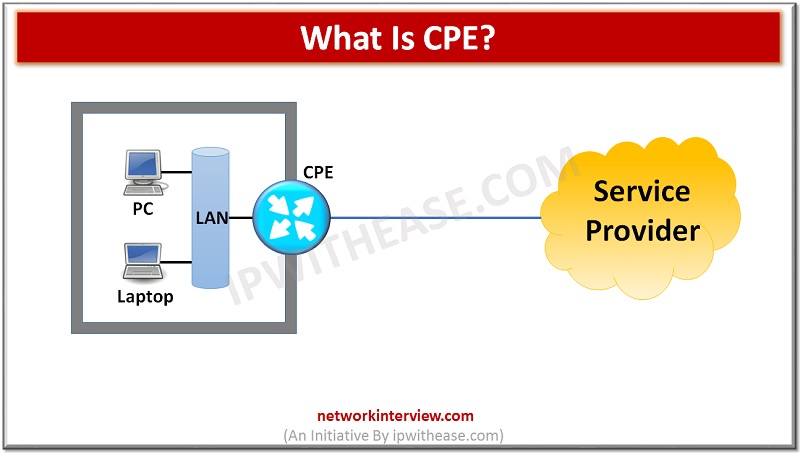
What Is CPE?
CPE stands for Customer Premises Equipment. When it comes to telecommunication terminology, any of the telecommunication equipment that is either sold or rented/leased by the official carrier to any of their customers and that equipment is installed in customer’s location is called CPE.
CPE is generally used in order to initiate the route between the customer premises and the destination is the central office of the carrier that has given the equipment. In other words, it is an equipment that will connect the customer’s home or office to the official carrier’s central office from where all the services are provided.
Applications of CPE
CPE is used in many places. Talking about the examples, the telephone using which we talk are also a part of CPE. Moreover, there certain another real-life usage where we use CPE such as in models CSU/DSU which are also known as channel service unit or data service unit, PBX which stands for private branch exchanges. Along with this, there are many other real-life usages where we are using CPE on a daily basis.
Any equipment using which we can connect to different places can be treated as a CPE. Most probably the carrier will direct the final route of the network and it is called CPE. The modem might not directly be sold or leased by the carrier but it helps the computer network to reach the central office. There is a wired line that is directly connected to the modem which will define the route of your network to the central office. From the central office, all the routes are finally transferred according to the packets.
Whether the equipment is directly sold or given at lease it decided by the carrier itself. In most of the cases, a telephone is leased and not directly sold whereas the modem is directly sold to the customer. The customer can, later on, connect it with the cable to access the data and take advantage of the carrier service. Therefore, it depends on the carrier company on how they plan to distribute the Customer Premises Equipment.
Working of CPE
Now, let’s get a little bit deep into the working of the CPE. The configuration of any of the CPE devices is done most of times by the carrier service itself. Also, there is constant monitoring of the CPE to ensure everything is alright. All of these things are either pre-configured or the customer is given a complete user manual and they just have to enter their login id and password in order to use the CPE.
Once the CPE is installed and the configuration is complete, one can start using the CPE. Let’s say a modem device is installed termination for any of the line. For instance, the line is T2. The modem is already configured or we can simply enter the details to continue working with it. We can then connect the computer with a modem and start using the data. There is a network protocol called the Simple Network Management Protocol used for monitoring. All the features, loopbacks, and other usage details are sent to the service provider. In this way, the service provider can decide if there is something wrong with the device or not. In the same way, the central office can know if the remote device is working properly and sending the data to the central office.
Some examples of CPE devices are –
- Telephone handsets
- cable TV set-top boxes
- Digital Subscriber Line routers
Tag:Infrastructure



